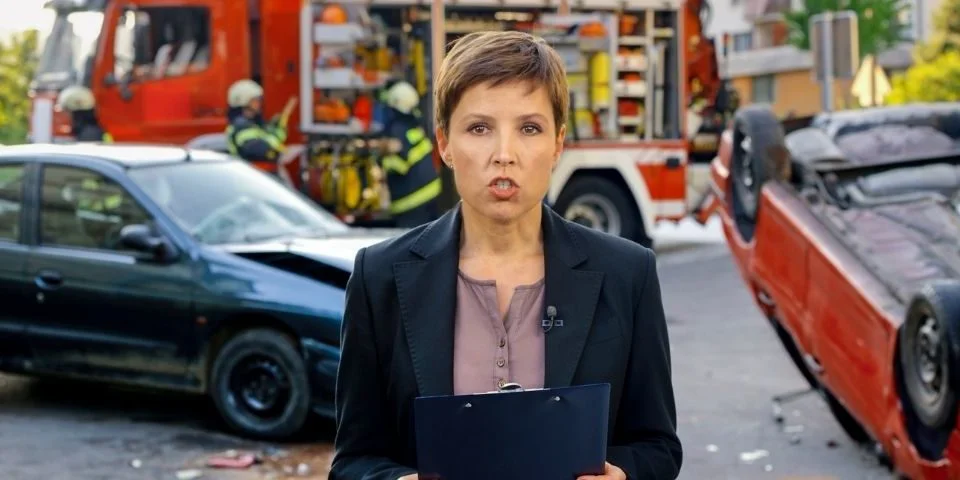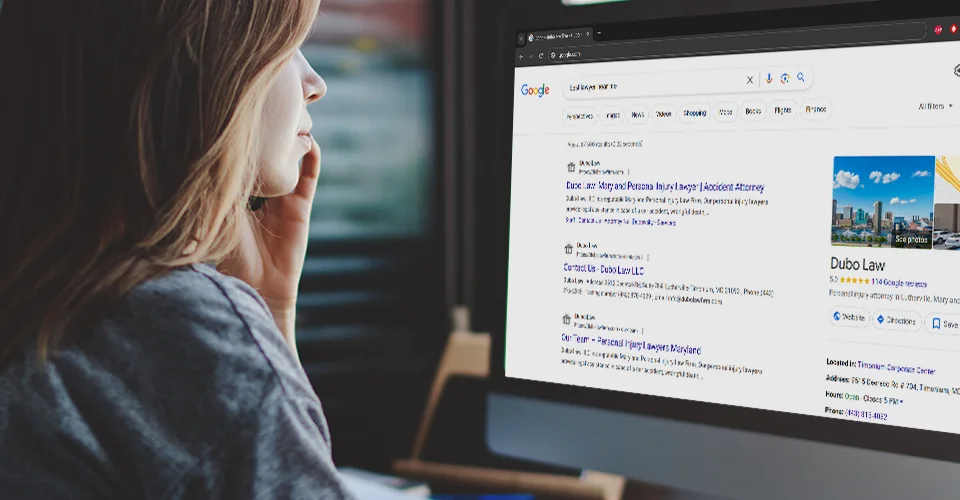
Winter Driving Safety Tips (Survival Guide for Short & Long Trips)
January 9, 2023
Car Accident Statistic Maryland 2021
March 27, 2023Usually, those new to driving practice their skills around town before moving to the freeway. Four-lane (or sometimes more) interstate can be overwhelming, even for experienced drivers. When moving at high speed, merging into traffic, and changing lanes on the interstate, it is essential to maintain focus and have the needed agility.
Highways require more caution and alertness and usually involve vehicles of all sizes. So, before moving from local driving to highways, it is important to have a basic idea of how these roads function. Knowing the fundamentals of interstate highways can help drivers to feel more comfortable and safe, especially if driving for the first time.
If you’ve been injured in a highway accident, we want to help. We believe everyone deserves to get their case heard and be able to afford the best representation. That’s why we don’t charge any fees unless we win. Get a 100% free consultation with our top-rated car accident lawyers who have recovered millions for clients in Baltimore and all over the state of Maryland.
In the following article we will discuss how to drive on highways and provide tips for safe driving to avoid highway crashes.
Facts to Remember When Stepping into the Highway
Entrances and Exists
There are no turns on the highway but entrance and exit ramps where drivers safely merge in and out of the traffic. Basically, the freeway on-ramp has the purpose of accommodating vehicles that advance slowly and fast and allow other drivers the opportunity to enter the traffic flow safely.
Remember, when you drive to the entrance ramps, combine checking left side mirrors and blind spots to see if any other vehicle is approaching the right lane of the interstate. When you are certain that there are no vehicles in the right lane, merge left and turn off the blinker.
Make sure to increase your speed a bit, so you don’t slow the velocity of other drivers. If you fail to match the freeway speed, drivers already operating on the road may have to brake or accelerate suddenly and change lanes completely to avoid the crash.
When exiting the freeway, the same rules apply, but instead of speeding up, slow down. Try not to decrease your speed until you are near the off-ramp because driving slowly while still on the freeway can cause the same issues as when entering.
Pay attention to other drivers such as transfer trucks or those who travel long distances. Transfer trucks are to be found on any interstate. They often have limited and poor visibility, so you must adapt to the situation. On the other hand, many drivers use highways to travel long distances, and they may be tired and exhausted. You should check the mirrors and blind spots and use signals properly.
Speed Limits in Maryland and Lane Choice
Another important fact to consider is the speed limit on Maryland highways. Being familiar with the speed limit is very important in avoiding potential speeding tickets, penalties, and most importantly the accidents. Traffic laws in Maryland are set up by Maryland Department of Transportation and are defined by two types of speed limits: basic speeding Maryland law and absolute speed limits.
So here are the speeding rules according to Maryland traffic law:
- The maximum speed limit on Interstate Highways in Maryland is 70mph
- When it comes to urban freeways, 4 lane non-interstate highways, and non-freeways are usually 55mph, with exceptions on I-95 and I-97, where speed is limited to 65mph.
- Maryland has the same speed limit for both divided and undivided roads which is 55mph
The right lanes on the highway are reserved for slower traffic. In most states, big trucks are forbidden from the right lanes because of their size and slow speed. There are also other motorists who travel at low speed, and if you notice another vehicle traveling faster than your vehicle, you are in the wrong lane.
The left lanes are for the fast-moving vehicles and the farthest left lane is for passing. The freeway rule is that if you pass another car while in the left lane, don’t stay there for a long time. Squatting can prevent others from passing those slower motorists, who will cause back-up and heavy traffic. Driver will become angry and frustrated which can cause additional consequences such as reckless speeding and crashes.
Freeway Signs
There are standards signs such as speed limits, exits, and entrances ramps, interchanges, but also those alerts which warn the drivers of hazardous and dangerous road conditions. Those include curves, inclines, and declines and it is required to slow down in case drivers see these signs.
When traveling uphill, push harder on the accelerator or the vehicle will slow down. When going downhill pay attention to the speedometer. It is important to try to suppress the speed limit and law enforcement sometimes set up the trap on the very bottom of the hill.
Curves can be very dangerous because drivers can’t see the road ahead of them and in this case slowing down is the best possible option. Smaller vehicles may easily handle the greater speed on these roads, but speed limits signs should be primary guidance for safe driving.
There are so many unexpected situations that may occur while on the highway. The following are some interstate driving tips that are going to help you stay safe. Whether it is your first time driving on the highway or you are an experienced driver try to follow these tips to avoid unpleasant and dangerous situations.
Avoid Driving While Under the Influence
This is the most common problem among drivers and according to CDC. Every 50 minutes, one person dies from impaired driving in the USA. It is very easy to avoid driving while drinking, and the very first piece of advice is to not sit behind the wheel if you’re partying before. Having a designated driver or calling an Uber, Lyft, or taxi is the best way to arrive home safely after a night out. Causing a crash on the highway can have big consequences, and one of them is the potential pile-up of vehicles. The multi-vehicle accidents are very common on highways since there are a lot of cars.
Check the Weather
Checking the weather before hitting the road is vital, especially during wintertime. If driving to another state, you should check the potential snowstorms there too. Typically, the first 10-15 minutes of snowing or rain are considered to be the most dangerous for freeway driving. There is a simple explanation here: the roads become slick, and the oil from the vehicles mixes with it and debris, causing traction reduction.
Rush Hour Issue
Drivers who travel to work every morning and go back home every evening during rush hours on the highway can’t avoid it easily. Driving during these hours causes aggressive driving and behavior since they become frustrated in heavy highway traffic. But newbies should avoid rush hours on freeways and six-lane highways. Generally, first-time drivers would want to select a local road that isn’t too busy. The busiest hours on these roads are 8-10 am and 4-7 pm from Monday to Friday. The best time for driving on the highways for the first time should be the early afternoon, and you won’t encounter many vehicles, which will help you accommodate safe driving.
Make the Space for Lane Switching
Probably the most stressful part of highway driving is lane switching and merging. During the rush hours the frustration gets bigger since finding the gap between cars is challenging. Safely merging includes some steps and rules every driver should follow.
- Start to accelerate the speed at the entrance ramp and pay attention to the traffic in the lane
- Always use the turn signal
- Once you realize it is safe, increase the speed
- Bear in mind that when merging, you don’t have the right of way
- Safely enter the freeway and accommodate your speed to the rest of the traffic
Avoid Distractions
Distracted driving is even more common than drunk driving in recent years. It includes phone use, drinking, eating, reaching for something, talking and arguing with passengers, adjusting GPS, radio station, and climate control. Since highway driving includes many vehicles surrounding you and traveling in the same direction and traveling at greater speed, the consequences of the crash may be devastating. Give the freeway undivided attention and prevent major safety threats.
Keep the Safe Distance
Maintaining a safe distance is the best way to reduce the risk of getting into an accident with other vehicles. It is very simple to keep your distance by following the two-second rule.
- Choose an object such as billboards, a large tree or an overpass
- Watch the car in front of you passing the object and start counting
- You’ll know about being too close to the driver in front if your vehicle passes the object in less than two seconds
- According to this test, you should adjust your speed and distance.
Stay Concentrated
This is an important unwritten rule for every time you sit behind the wheel. But places such as highways increase the possibility of dangerous situations to occur because it involves many vehicles driving at high speed and very close to each other. The driver should always pay attention to the surroundings and some examples are looking for the brake lights or checking the side view and rearview mirrors. Paying close attention and staying focused should become a habit for every driver on the highway.
Do not Drive in Other’s Blind Spots
While on the freeway, try to avoid driving in the blind spot of other vehicles since this is a very dangerous thing to do. Do not drive parallel to others!
Do not Park on the Side of Highway
Do not stop at shoulders, ramps, or pavements unless it is an emergency. If your vehicle breaks down on the highways, turn the emergency light on and pull over as far away from the ongoing traffic as possible.

Tips for Safe Night Highway Driving
Driving at night can be stressful, even for the most experienced drivers. It is four times more likely that an accident will occur at night than during daylight. Some of the risks include drunk drivers and those who are tired from a long day at work. Here are some tips on how to drive safely at night.
Fight Fatigue, Drinking, and Distractions
These three are probably the most common reasons for an accident to occur at night while on the highway. According to NHTSA, fatal crashes caused by alcohol or drug impairment are more likely to happen at night. Needless to mention that distracted drivers are increasing every year too. In case you are too tired to drive, have some coffee or a pullover to get some rest. Some drivers reported that letting the fresh air in or listening to low-volume radio may help them stay alert.
Clean Your Windshield
Since the visibility is lower at night, it is very important to clean the windshield or replace it if damaged. If your windshield is dirty or broken, it can scatter the light and increase the effects of glare. A dirty or damaged headlight can cause other drivers coming the opposite way the same thing.
Use High Beams When Necessary
High beams usually help in rural areas or on open roads. You should dim them within 500 feet of the upcoming vehicle and be careful not to blind another driver.
Avoid Two-Lane Highway if Possible
Even though we are discussing how to drive safely on the highways, nighttime two-lane highway driving may be the worst-case scenario. The reason for that is nighttime glare because of the oncoming headlights, lower overall light, and these roads sometimes have more curves, inclines and declines than the freeway.
Prevent Being Blinded
If the driver coming your way turns high beams on, and there is a risk of you getting blinded, shift your eyes down to the right. Use the right edge and lane markers to keep your focus.
Keep Cabin Illumination Low
The instrument cluster and other lights in your vehicle’s interior should be kept low. Why is that? Well, your pupils will close as in the daytime, and looking at the road will be more difficult.

Author: Neil Dubovsky, founder and principal at Dubo Law, LLC
Neil Dubovsky graduated with Honors and magna cum laude from the University of Baltimore School of Law in 2002. He received the prestigious Faculty Award, which was awarded to the student who best “exhibited unusual qualities of scholarship, leadership, and service.” Neil also received an AV Preeminent rating from Martindale Hubbell – the highest rating possible. He is rated as one of the Top 100 Civil Trial Lawyers in Maryland by the National Trial Lawyers Association and selected to the 2022 Maryland Super Lawyers list. Neil is a husband and father of two beautiful girls.
100% Free Consultation With A
Top Car Accident Attorney
Phone
443-275-6345
Hours of Operation
Monday – Friday: 8:30 AM – 5:00 PM
COVID-19 Update
Your health and safety are important to us. Please be advised that we are open for business during COVID-19 quarantines. All consultations will be conducted either via video chat, phone, or email.





